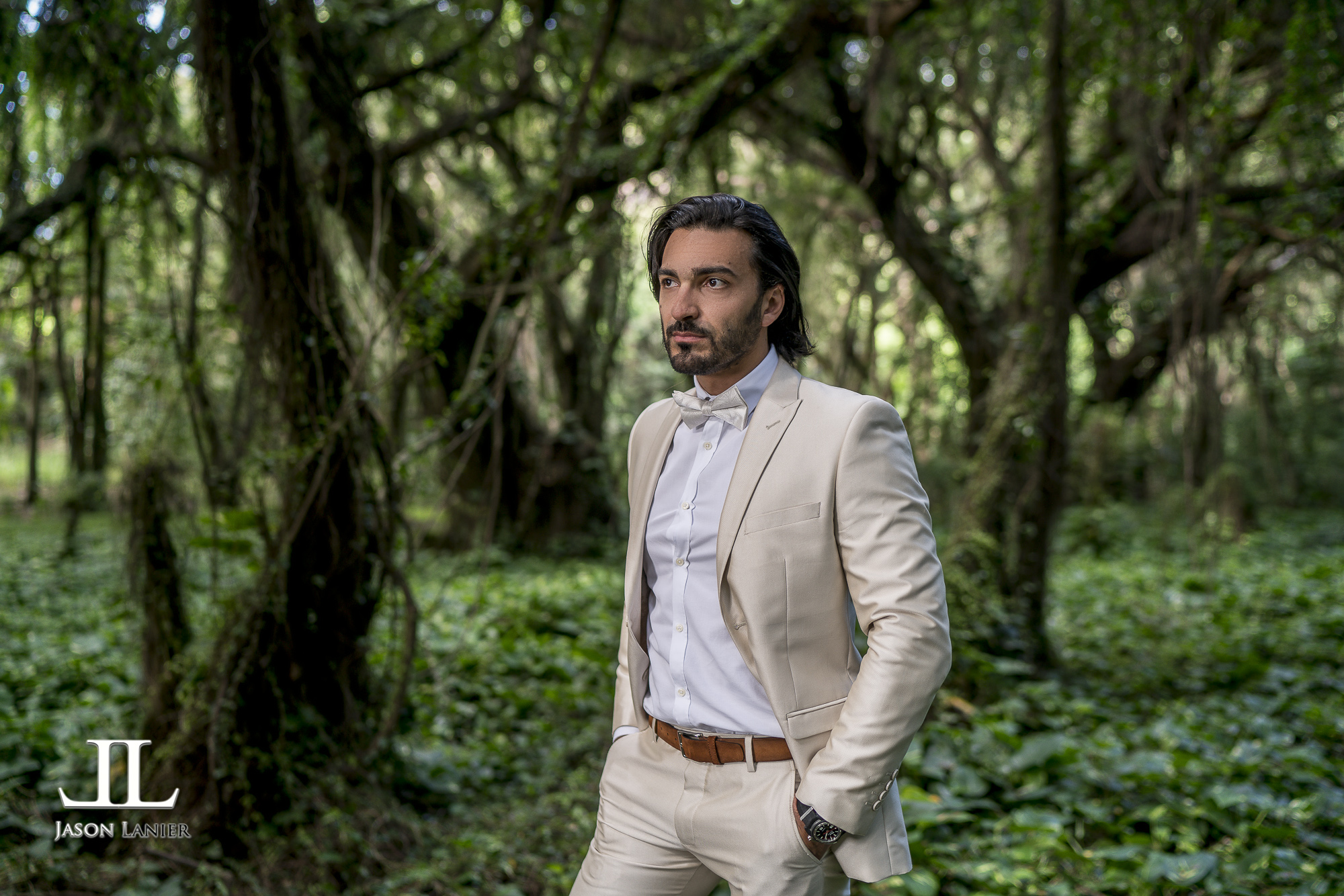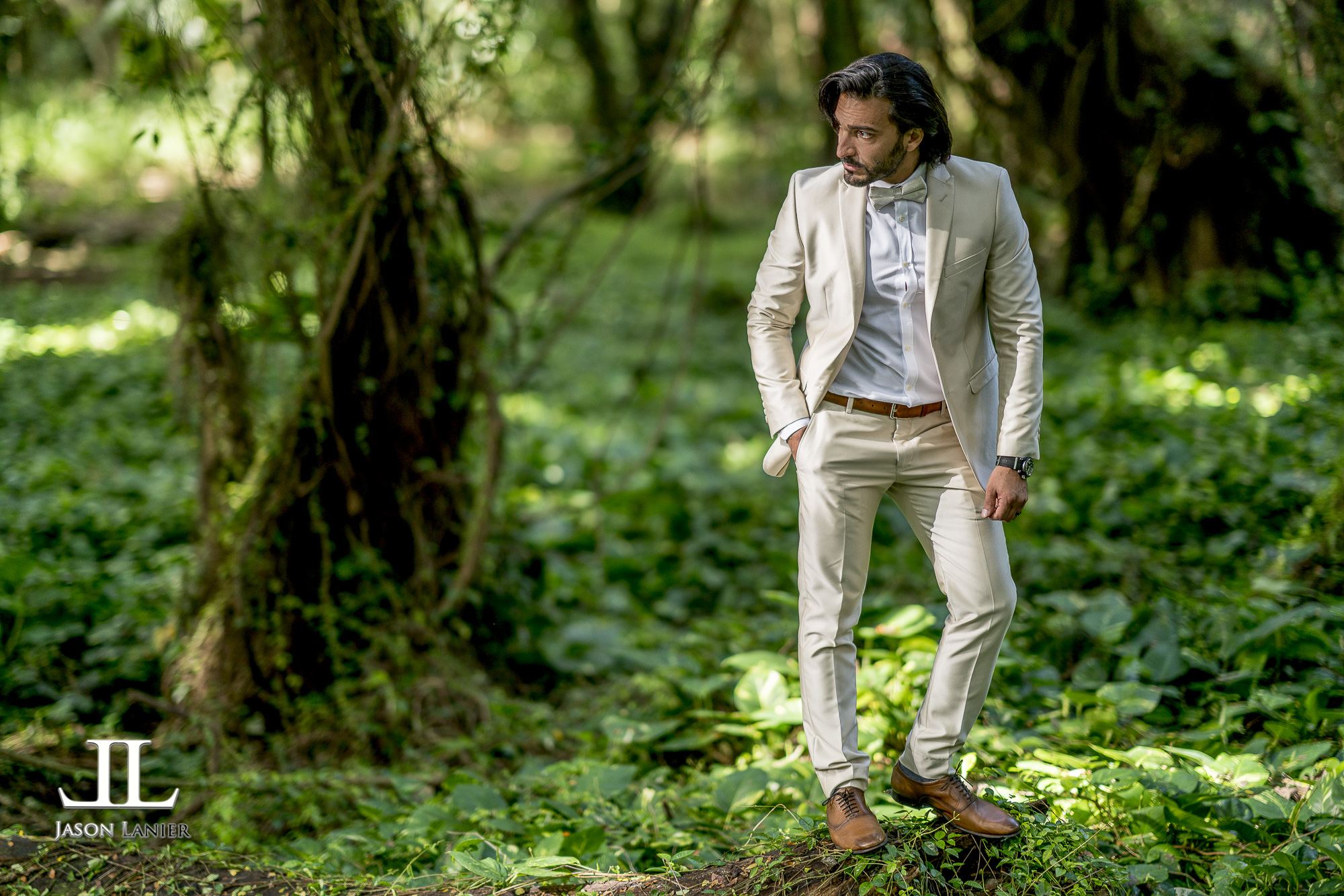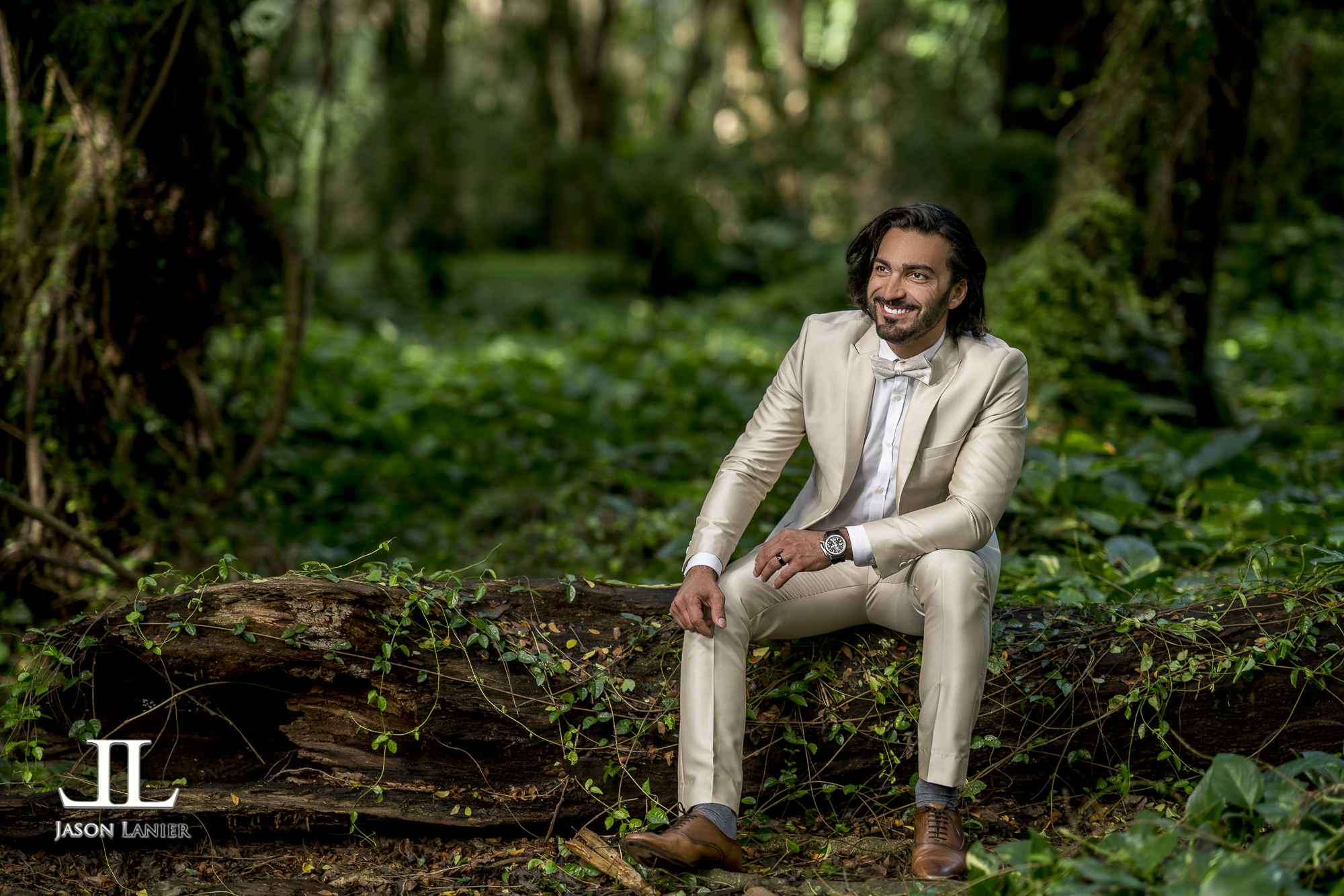Join Jason Lanier as he photographs a bride and groom in Kauai, Hawaii. Throughout this shoot Jason utilized natural light, strobe and LED. Take a look at some of the shots and let us know what you think in the comments below! Thanks for tuning in.
Viewing entries tagged
wedding photography
It's hard to make it as a new photographer. Hard to understand what is required of you. As a wedding photographer it's even more daunting because you are capturing a once in a lifetime moment....and you do NOT want to screw up!
Nearly every established wedding photographer has experience being a second shooter at a wedding. Usually it's something they do when they are getting experience under their belts. It's an invaluable way to learn how to be a wedding photographer without having the stress of the lead shooter.
As an experienced wedding photographer I've had the opportunity to be a second shooter for a few weddings when I first started. I also have trained numerous second shooters over the years to help them become who they want to be as photographers.
Recently on my Patreon channel www.patreon.com/jasonlanierphotography my subscribers asked me to make a video about second shooters. The do's and don'ts, with advice on how to make it all work well together. So I got together with my Assistant Emily Rinaldo for a wedding of mine at the Stettenfels Castle in Germany and we recorded a video on lead an second shooters.
Below is a link to the video:
Here are the 11 Essential Tips to Wedding Photography for Lead and Second Shooters. My assistant Emily helped me put this together...thanks Em!
How Do You Become a Second Shooter? Being a second shooter requires reciprocity. A lead photographer provides a second shooter with experience, opportunity, and exposure. In order to adequately reciprocate the exchange, the second shooter must ask themselves how they can benefit the lead photographer. Pretty much what this means is a newer photographer needs to find a way to provide value to a more experienced, lead shooter. If they can do that, they will be provided with more opportunities to shoot, learn and grow.
How Should a Lead Shooter Handle Business with a Second Shooter? It is highly recommended that the lead photographer initiate a contract. The contract should contain information that describes expectations. An expectation worth discussing includes: owning of images. A second shooter may ask, “are the shots I took mine?”. Well, yes of course they are; however, they were captured while working under the direction of the lead shooter. The lead shooter set up lighting, posing, and hired the second shooter. As a result, the lead shooter owns the images. Does this mean that the lead shooter can claim the second shooter’s images as their own? Absolutely not - the lead photographer should most definitely provide credit where it’s due and vise versa, the second shooter should acknowledge that the images were captured when working with the lead shooter. Both parties should be mindful and considerate of one another.
Can Second Shooters Use the Images in Their Portfolio? Second shooters may use the images they capture for the lead shooter in their portfolio as long as the lead photographer provides consent to do so. This will vary depending on the photographer. When updating your portfolio be sure to annotate that the photograph was taken when working under the direction of the lead photographer.
When should Second Shooters post the images they take? As a second shooter it’s likely you’re photographing something new and exciting. With excitement comes eagerness to share on social media. Although it may seem tough, just remember to pump the breaks. It’s imperative that the second shooter waits for the lead photographer’s approval before posting shots. Approval may be dependent on different factors such as: when the client receives their shots and when the lead photographer posts their shots. It’s important to consider what it may feel like for the client to see shots of their wedding from a photographer who is not the lead. Just be respectful and wait until the lead gives the okay - if you’re not sure, just ask!
What are the roles of a Lead and Second Photographer? A lead photographer is just as it seems, the lead. This means that they hold all responsibilities (i.e. lighting, posing, composition, time management, communication repair, problem solving, etc). The second shooter must support the lead as requested by them. While supporting, please recognize that the pressure is not entirely on you. Utilize those moments to observe and attend to how the lead is running the show. Pay attention to gear used, positioning of subjects, use of communication skills, and tactics used to maintain a forward progression of events or the event’s fluidity.
What gear should Lead and Second Shooters use? Lead shooters must clearly describe what gear the second shooter should use. To maximize the range of shots taken, it is recommended that the lead shooter encourage the second shooter to use glass that differs from theirs (i.e. the lead shooter will decide who uses the zoom lens and who uses the wide angle). Lead shooters should also express that the second shooter should attempt to frame different shots. Don’t be a shadow second shooter; photograph at a different angle to provide the lead photographer and client with an alternative look.
Don’t Try and Be a Hero- As a creative, there are going to be moments where you want to photograph your perfect dream shot (i.e. an image where the focal point is on a lovely rose pedal and the audience is blurred out, or the bride’s shoe as she steps out of a nice vehicle). Those shots may benefit your portfolio; however, you need to remind yourself that you are on the clock and on someone else’s time. Therefore, it is important to recognize that hero shots, as lovely as they may be, take time and attention to compose. As I quickly learned, weddings do not wait, so it is imperative that second shooters remind themselves to fulfill their expectations as requested by the lead shooter. Don’t get caught up in the moment - stay focused on the task at hand.
Prepping Gear for the Wedding- SYNC YOUR EQUIPMENT. Lead shooters, save yourself the headache and sync your cameras. This includes: date stamps, times, etc. You’ll thank yourself later when editing. Another consideration is to shoot in the same white balance. This helps to maintain consistency within the work. Lastly, the lead and second photographer can shoot with different camera makes; however, shooting with the same camera is preferable. These tips are not necessarily required but have been deemed beneficial when working with a second photographer.
Setting Expectations Prior to the Wedding- Lead shooters, it is recommended that you review expectations with the second shooter when you first book them to do the wedding with you. You should then have a follow up call/meeting to discuss specific details after you have finalized the wedding itinerary with the client. Expectations are necessary for adequate task completion. They should highlight roles and responsibilities required throughout the event. Clear expectations should facilitate understanding of the task at hand. When both parties are on the same page, the room for error is likely to decease. Please refer above for a description of suggested expectations (i.e. who owns images, when to post images, where the second shooter should stand, what gear the second shooter will use, a moment in time that the second shooter should aim to capture).
Shooting Together Before the Wedding Can Be a Big Help- Lead shooters, please take the time to take pictures with your second shooter prior to the event. This gives you opportunity to familiarize, socialize, and provides insight on their shooting style. Second shooters, here is a chance for you to feel comfortable shooting along side the lead photographer. Don’t be afraid to ask questions. Just the other day Jason took me out to shoot for the first time. And man was I nervous! I felt like every shot I took was unflattering. I was so excited to shoot, I forgot some of the basics (i.e. composition, framing, negating unwanted space). I expressed my feelings and Jason provided suggestions. Once implemented, I immediately saw better results and my confidence raised again. Overall, I’m really glad we shot together before the wedding - it helped ease some of my excitement that I felt on the day of.
Understand what your client needs vs. what you want- Without a doubt, weddings are beautiful. They’re full of life, laughter, and emotion. It’s easy to get caught up in the moment but you need to remind yourself why you’re there; to serve your clients. Avoid sacrificing a shot that the client needs, for a shot that you want as a photographer. To understand shots that the client needs, please check in with them before, and on the day of the wedding. Find out what they wish to have photographed. Some clients may want to include a really special center piece or wine glass, while others may wish to have portraits with specific family members and friends. Whatever it is, just ask, check for understanding, and be sure to include in your finished work.
Thanks Emily for helping me write up the 11 points! We certainly hope this helps and thank you for reading my blog. This was all done as part of my REAL Wedding Workshop at the Stettenfels Castle in Germany. If you'd like to join us for one of my workshops please visit www.jasonlanier.com/register today!
Thanks,
Jason
Image taken by me at the wedding using a wide angle lens
Shot taken by Emily using the 70-200mm
On my Youtube Channel I'm known for taking pics of lots of pretty women around the world. What some may not realize is before my Youtube and commercial work days I shot hundreds of weddings in many places which meant that I had to of course, shoot men.
Now this isn't a bad thing. Shooting men is quite a bit of fun and is actually a completely different dynamic than when I shoot women. I remember when I shot weddings I would go into the bridal room and more often than not the feel and vibe of the shoot was a romantic, fairy tale type of a shoot. Everything seemed to be very poetic and magical.
**Don't forget to subscribe to my blog and Youtube Channel...:)
Then I would head over to the Groom's Room. That was a different story. Typically the groom's room involved a bit of alcohol consumption by the groom and his friends which lead to some pretty fun and crazy shoots. In other words, I had to learn to shoot differently based upon shooting a bride vs. shooting a groom.
Many times (unless you're a male model), men don't particularly love having their picture taken. It's always one of those types of scenarios where men just "want to get the shoot over with." I learned over the years that using humor was a great way to get the groom to relax and actually get into the shoot. Once I got their buy in, the shoot turned into something magical.
Now I'm using generalities here and there are always exceptions. Women and brides can certainly be wild and very funny and men can certainly be romantic and elegant. But in the hundreds of weddings I've shot I've found my descriptions of both to be what I encounter the majority of the time. Best piece of advice, learn who your clients are and adjust to their personality and needs.
So that leads us to this shoot. This was a bride and groom out in Hawaii for their honeymoon. They found out I was in Hawaii on vacation and made arrangements with me to do a shoot of them in their wedding attire while out there. This was very unique timing as it was their first day of their honeymoon, and my last day of vacation with my family. So they were eager to get their honeymoon started and I was eager to get packed up and head to the airport.
I first spoke with the bride Karolina and when we spoke about doing the shoot she was very excited. Her husband Ray was happy to do the shoot, but just didn't want it to go very long. He was more than cooperative but like many grooms just "wanted to get it over with." Understanding this dynamic I persuaded the couple that there was this amazing rainforest that could produce some really gorgeous images.
So we drove down there to shoot. I started setting up my gear and my friend Chris Millen agreed to come along to help roll video. Thanks Chris! I didn't have any assistants or crew since I was just there on vacation. So I set up my gear and started shooting. But the important thing was that I started shooting the groom (Ray) first. I wanted and needed him engaged in the shoot. I wanted him to feel good about taking the time to do the shoot and to feel good about himself.
We started joking around while shooting and before we knew it we were having a really fun banter back and forth which lead to some really great sets of images. If you can get a groom to laugh and get him to feel good about himself, you can create some fantastic images. Ray's wife is a model. So you can imagine that might make anyone feel a little intimidated. He probably assumed that a photographer would only be interested in shooting her.
By starting with him, by showing him that I really wanted to create something amazing with him, it really builds confidence which lead to a fantastic shoot. At one point he teased his wife Karolina telling her that she was jealous I was spending so much time with him lol.
The bottom line is that if you take the time to show a man that their time is valuable and that you are invested in shooting them, the rewards can be great. I highly recommend you watch the video to see the posing and techniques used to create the images below.
Images taken with the Sony A7Rii and the 35mm Sony Zeiss f/1.4
Images taken using the Sony A7Rii with the 85mm G Master f/1.4
**Links to Gear Used:
I hope this helps and that it gives you some insight on how I shoot male subjects in general. In essence if you do it right, it's an absolute blast that can give you some stellar results...
Thanks!
Jason


























